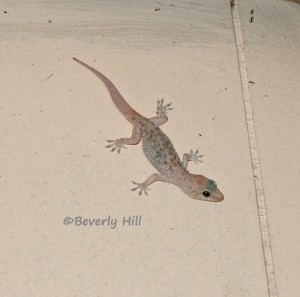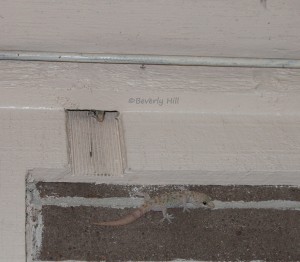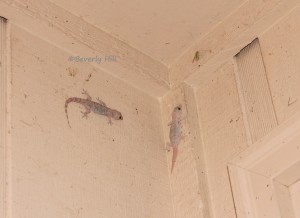Most often seen between dusk and dawn, the small Hemidactylus turcicus are prowling window screens and doorways in the dark of the night, dutifully on the patrol for moths, flies, or other bothersome pests. What are these odd, little creatures and where did they come from?
Range
Although native to the Mediterranean area, India, and the Middle East, Mediterranean Geckos have successfully made a home for themselves throughout portions of the southern United States, mainly by stowing away in cargo transports. These nearly translucent geckos have even established colonies in Arizona, Arkansas, California, Missouri, Nevada, New Mexico, Oklahoma, Texas, and Hawaii.
At night, Mediterranean Geckos can be observed prowling along on the outside of buildings, windows, or garage doors where they hang out near lights in order to score an easy meal. These social geckos can often be seen in number, and may even be spotted in the presence of other gecko species or tree frogs.
Because of their ability to colonize quickly, Mediterranean Geckos have been known to displace native gecko colonies, although in Florida, the native species are reclaiming their territory. The full impact on native species is not known.
Size and Characteristics
Adult Mediterranean Geckos grow to about five inches in length, have lidless eyes, vertical pupils, a warty skin texture, and broad toe pads for gripping smooth surfaces. Geckos are mostly white in coloration and somewhat transparent. During the spring and summer months, the eggs of the female can easily be seen through the abdomen.
From one to three times a year, the female will lay up to two, white hard-shelled eggs during a breeding season. Eggs are laid under leaf litter or moist soil beneath debris such as rocks or rotting wood. It is common for more than one female to lay eggs in the same location.
Hemidactylus turcicusare very vocal and can be heard squeaking and clicking at one another. If disturbed, they may bite in self defense, although their teeth are very small and the bite is not painful. They are also able to cast off their tail in an effort to distract predators so that they may escape. Predators of the species include cats, large spiders, and Cuban tree frogs (another invasive species.)
Lucky Geckos
Some cultures consider it good luck to have a gecko in one’s house, and with their love of eating cockroaches, many people would agree and welcome them. So if there are geckos hanging around the house, or in it, there’s no harm in encouraging them.
[amazon template=iframe image&asin=B0073WTJS2]




I love my geckos! Every night hubby and I watch a couple of geckos who hang out (outside, of course) on our dining room glass doors. They eat… ahem… water bugs. I cheer every time one of the geckos gets a roach!
They are fun to watch aren’t they? I love when they’re on the screen and you can tell they’ve got a couple of eggs inside of them. Yeah! More pest control warriors!